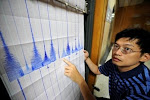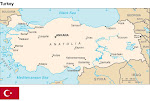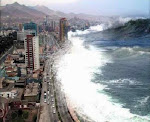 The effects of a massive volcanic eruption in Peru more than 400 years ago might have significantly impacted societies and agriculture world-wide, according to a new study of historic records.Huaynaputina erupted in southern Peru on Feb. 19, 1600, driving volcanic mudflows that destroyed villages for many miles around and spewing a huge column of smoke and ash into the atmosphere. The eruption of Huaynaputina represents the largest known eruption in South America in the past 500 years, said study leader Ken Verosub of the University of California, Davis.
The effects of a massive volcanic eruption in Peru more than 400 years ago might have significantly impacted societies and agriculture world-wide, according to a new study of historic records.Huaynaputina erupted in southern Peru on Feb. 19, 1600, driving volcanic mudflows that destroyed villages for many miles around and spewing a huge column of smoke and ash into the atmosphere. The eruption of Huaynaputina represents the largest known eruption in South America in the past 500 years, said study leader Ken Verosub of the University of California, Davis.Global cooling
Like many other volcanic eruptions, Huaynaputina injected a large amount of sulfur into the atmosphere.Sulfur reacts with water in the air to form sulfuric acid droplets, which reflect some of the sunlight hitting Earth, preventing rays from reaching the surface. The reduction in sunlight cools the surface for a year or so, until the droplets fall out of the atmosphere.The most recent case of this cooling from a volcanic eruption occurred when Mount Pinatubo, in the Philippines, blew its top in 1991. Global temperatures dropped by about 1 degree Fahrenheit (0.5 degrees Celsius) the following year. (Scientists have proposed schemes to artificially inject sulfur into the atmosphere to counteract the effects of global warming.)Studies of tree rings have shown that 1601 was a cold year (trees grow less in colder years, so the growth rings corresponding to those years are not as wide), but no one had looked through records to see how the eruption impacted societies globally."We knew it was a big eruption, we knew it was a cold year, and that's all we knew," Verosub said.Other historic eruptions, such as Indonesia's Tambora in 1815, had well-documented effects on global agriculture.Verosub and undergraduate student Jake Lippmann combed through records from the turn of the 17th century in Europe, China, Japan and the Spanish and Portuguese colonies in South America to investigate the eruption's potential impacts.
Famine, freezes and late harvests
Here is what the geologists found: In Russia, the period from 1601 to 1603 brought the worst famine in the country's history, contributing to the overthrow of the czar and the decade-long crisis known as the "Time of Troubles."Records from Switzerland, Latvia and Estonia mention the exceptionally cold winters from 1600 to 1602. The 1601 wine harvest in France was late and wine production collapsed in Germany and colonial Peru.In China, peach trees bloomed late, while in Japan, Lake Suwa had one of its earliest freezing dates in 500 years."In one sense, we can't prove that the volcano was responsible for all this," Verosub said, "but we hope to show that 1601 was a consistently bad year, connected by this event."The findings are detailed in Eos, the weekly newspaper of the American Geophysical Union. Verosub also plans to examine records kept by the Jesuit order of the Roman Catholic Church in Seville, Spain, and by the Ming Dynasty in China.
http://www.foxnews.com/story/0,2933,354267,00.html
As in the days of Noah...



















.jpg)


.bmp)
No comments:
Post a Comment